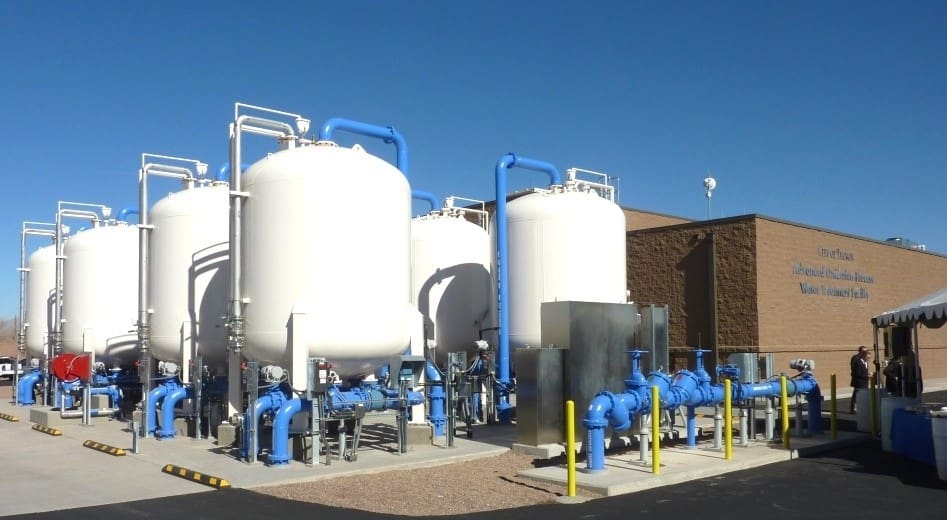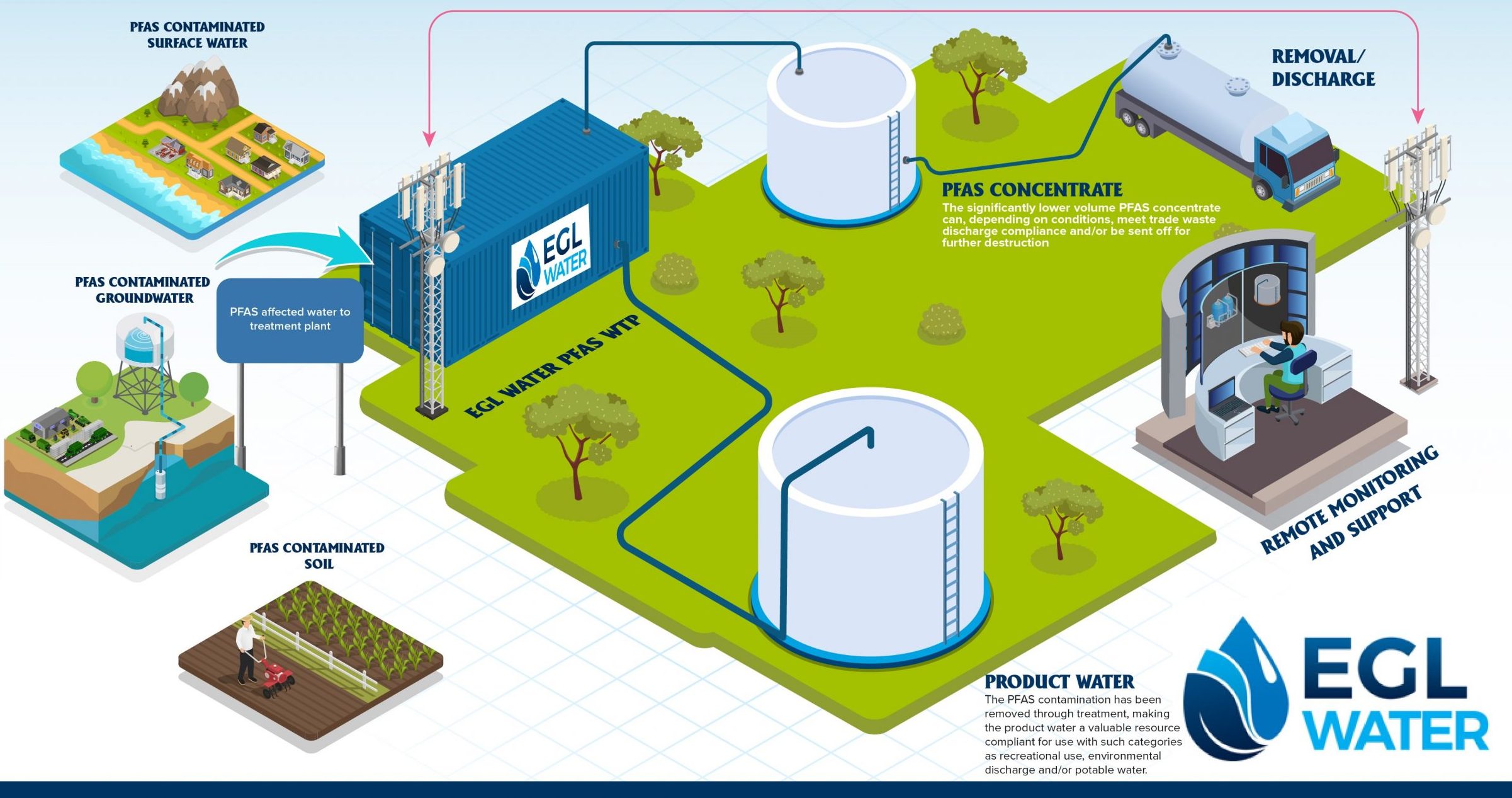Best Practices for PFAS Waste Management at Industrial Sites
Ingenious PFAS Therapy Solutions for Safer Water
The increasing occurrence of PFAS contamination in water products necessitates a critical assessment of innovative treatment remedies. In addition, emerging bioremediation techniques supply an even more sustainable approach to tackling PFAS obstacles. pfas management.
Introduction of PFAS Contamination
PFAS contamination has actually arised as a considerable ecological and public health and wellness worry. Per- and polyfluoroalkyl materials (PFAS) are a team of synthetic chemicals recognized for their determination in the environment and human body, leading them to be generally referred to as "permanently chemicals." These substances have been extensively used in different industries, including firefighting foams, water-repellent textiles, and food packaging, primarily because of their water- and grease-resistant residential or commercial properties.
The widespread use PFAS has actually resulted in their detection in dirt, water products, and also in the blood of human beings and pets. Research studies have linked PFAS exposure to various wellness concerns, consisting of developmental effects in babies, body immune system dysfunction, and various kinds of cancer cells. Additionally, the ecological perseverance of these substances complicates their degradation and elimination, increasing worries about long-term eco-friendly effects.
Regulatory bodies are increasingly applying rigorous standards to keep track of and reduce PFAS degrees in drinking water and various other ecological mediums. As recognition of PFAS contamination grows, it has actually ended up being important for communities and sectors to look for effective therapy services to mitigate direct exposure and secure public health and wellness.
Advanced Filtration Technologies
As the urgency to resolve PFAS contamination heightens, advanced filtering modern technologies have become an essential component in the removal initiatives targeted at eliminating these persistent chemicals from water resources. These technologies take advantage of innovative mechanisms to successfully target and capture PFAS compounds, which are infamously immune to conventional therapy approaches.
One of the most appealing approaches is the use of granular turned on carbon (GAC), which adsorbs PFAS molecules because of its high surface and porous structure. This approach has been widely carried out in both metropolitan and industrial settings, showing considerable decreases in PFAS concentrations. Furthermore, ion exchange resins have gotten traction, specifically created to selectively bind PFAS ions from water, therefore promoting their elimination.
Membrane layer filtering modern technologies, such as reverse osmosis and nanofiltration, also show effectiveness in PFAS removal by physically separating contaminants from water - pfas management. These systems can accomplish high levels of purity, making them appropriate for drinking water applications
Chemical Treatment Advancements
Countless chemical therapy technologies are being discovered to effectively address PFAS contamination in water materials. One appealing strategy entails the use of advanced oxidation processes (AOPs), which make use of powerful oxidants such as ozone, hydrogen peroxide, or chlorine dioxide incorporated with UV light to damage down PFAS compounds right into less unsafe substances. This technique has actually shown efficacy in laboratory settings, revealing possible for see here scalability in real-world applications.
An additional innovative method is the growth of ion-exchange resins particularly made to target PFAS. These materials can uniquely adsorb PFAS substances from water, permitting their removal throughout therapy procedures. Current advancements have enhanced the effectiveness and capacity of these resins, making them a desirable choice for read this post here water therapy centers.
Furthermore, scientists are exploring using chemical agents like persulfate and ferrous ions to boost the deterioration of PFAS in contaminated water. These agents can cause chain reaction that facilitate the failure of relentless PFAS compounds.
Arising Bioremediation Methods
Recent innovations in chemical treatment innovations have actually paved the means for checking out bioremediation techniques as a viable option for addressing PFAS contamination. Bioremediation uses the all-natural metabolic processes of microbes to break down or transform toxins, making it an attractive method for dealing with relentless pollutants like PFAS.
Arising methods in bioremediation consist of making use of genetically engineered bacteria that can specifically target and damage down PFAS compounds. These microbial strains are being created for their boosted deterioration abilities, increasing the efficiency of the removal procedure. Additionally, scientists are exploring the potential of plant-assisted bioremediation, where certain plant types may uptake and withdraw PFAS from infected soil and water.
An additional promising strategy is the application of bioaugmentation, which entails introducing useful microbes into infected settings to enhance the destruction of PFAS. This read the full info here method can help with much faster removal timelines and improve general performance.

Governing Frameworks and Criteria
A thorough governing framework is vital for properly taking care of PFAS contamination and ensuring public health protection. The enhancing acknowledgment of per- and polyfluoroalkyl substances (PFAS) as environmental toxins has actually triggered numerous government and state firms to develop requirements that regulate their visibility in water supplies. The U.S. Epa (EPA) has actually established wellness advisories and is functioning toward establishing enforceable restrictions for PFAS in alcohol consumption water.
State-level regulations vary substantially, with some states taking on more stringent standards than those suggested by the EPA. These policies often consist of optimum pollutant levels (MCLs) for specific PFAS substances, surveillance requirements, and reporting obligations for water energies. Furthermore, emerging structures concentrate on the remediation of polluted sites, highlighting the requirement for efficient therapy innovations.

Verdict
To conclude, the advancement and execution of ingenious PFAS treatment options are vital for addressing the pervasive problem of water contamination. Advanced filtering modern technologies, chemical treatments, and arising bioremediation strategies collectively provide a diverse approach to efficiently reduce and deteriorate PFAS degrees. As regulatory structures continue to progress, incorporating these technologies will certainly be necessary to protect public wellness and restore the honesty of polluted water sources, inevitably contributing to a cleaner and more secure environment.